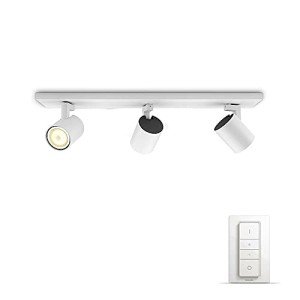Ten Contemporary Lighting UK-Related Stumbling Blocks You Should Not Share On Twitter
Contemporary Lighting in the UK: Transforming Spaces with Illumination
Lighting plays an essential function in specifying the atmosphere and performance of any area. In the UK, contemporary lighting has emerged as a significant style component, offering innovative services that mix aesthetic appeals with functionality. This short article delves into the numerous designs, products, and innovations forming contemporary lighting, in addition to pointers for picking the most ideal fixtures for different settings.
The Evolution of Contemporary Lighting
Contemporary lighting in the UK shows the altering tastes and technological improvements in design. It encapsulates a large variety of styles, including:
Minimalist: Characterized by simpleness and tidy lines, minimalist lighting fixtures concentrate on kind and function without unneeded decorations.
Industrial: Inspired by metropolitan settings, industrial lighting combines raw materials like metals and woods with strong styles, creating edgy, practical pieces.
Scandinavian: Known for its warmth and simplicity, Scandinavian lighting typically includes soft colors and natural products, focusing on creating a relaxing environment.
Smart Lighting: This modern trend integrates innovation with design, permitting users to control their lighting with mobile apps, voice commands, or automation systems.
To show the evolution and range in the field of contemporary lighting, consider the table below, which highlights key attributes of various styles.
Style
Key Characteristics
Popular Materials
Ideal Spaces
Minimalist
Easy, practical designs
Metal, glass, wood
Modern homes, offices
Industrial
Raw, incomplete appearance
Steel, concrete, wood
Lofts, galleries
Scandinavian
Relaxing, warm aesthetic appeals
Natural fibers, light wood
Living spaces, coffee shops
Smart
Integrated innovation, automation
Varies extensively
Homes, workplaces, retail spaces
Picking Contemporary Lighting Fixtures
Picking the ideal lighting fixtures for an area needs mindful consideration of several factors. Here are crucial components to keep in mind:
1. Purpose of the Space
Before choosing fixtures, think about the desired use of the area. Various functions require various types of lighting:
- Task Lighting: Focused lighting for activities such as reading, cooking, or studying. Examples include table lamps and under-cabinet lights.
- Ambient Lighting: General lighting that offers general lighting. Ceiling lights and pendant fixtures fall under this category.
- Accent Lighting: Designed to highlight specific features or areas, such as art work or architectural information. Wall sconces and track lighting are typical choices.
2. Design and Theme
The lighting needs to match the existing design. Go with fixtures that match or boost the general style of the space, whether it's contemporary, rustic, or diverse.
3. Size and Scale
Think about the proportion of the lighting fixtures relative to the area. A large chandelier might look spectacular above a spacious table, while smaller sized pendant lights work well in compact settings.
4. Energy Efficiency
With rising energy expenses and ecological concerns, selecting energy-efficient lighting alternatives is important. LED lights are an outstanding choice, using longevity and lower energy usage.
5. Flexibility
In modern style, versatility is crucial. Fixtures that can be adjusted or repositioned enhance functionality, enabling users to produce various environments as needed.
Popular Contemporary Lighting Brands in the UK
The contemporary lighting market in the UK boasts various brands known for their ingenious designs and quality workmanship. Some notable mentions include:
- FLOS: An Italian brand name commemorated for its creative and renowned light fixtures that often double as art pieces.
- Tom Dixon: A British designer recognized for his modern, industrial styles that perfectly incorporate metal and light.
- Anglepoise: Known for its flexible, functional lamps, ideal for a variety of settings from home offices to imaginative studios.
- John Lewis: Offers a range of contemporary lighting services that deal with a broader audience, consisting of affordable yet stylish alternatives.
Frequently Asked Questions about Contemporary Lighting in the UK
1. What is contemporary lighting?
Contemporary lighting describes lighting styles and fixtures that reflect current design patterns, often identified by clean lines, innovative shapes, and using modern materials and technologies.
2. How do I pick the best lighting for my home?
Think about the function of the room, existing décor, size of fixtures, energy efficiency, and flexibility. Examine how each piece will add to the general ambiance and performance of your space.
3. What are some energy-efficient lighting options offered in the UK?
LED lights are the most prominent energy-efficient option, understood for their long life expectancy and low energy usage. Compact fluorescent lights (CFLs) and halogen bulbs are other options.
4. Where can Rustic Lamps UK shop for contemporary lighting in the UK?
Contemporary lighting can be discovered in numerous retail outlets, both online and in physical shops. Significant retailers consist of John Lewis, Habitat, and specialized lighting stores.
5. Can contemporary lighting work in traditional areas?
Absolutely! Contemporary lighting can enhance traditional areas when chosen attentively. Picking fixtures with a balance between modern and timeless elements can create an unified style.
Contemporary lighting in the UK represents more than just illumination; it embodies style development and imagination, changing areas and enhancing functionality. As trends continue to develop, house owners and designers alike can explore an expansive variety of styles and technologies, ensuring that every room bursts with life, heat, and character. By thinking about the vital aspects detailed in this short article, one can curate a collection of lighting fixtures that resonates with individual design and fulfills useful requirements, eventually shaping comfy and visually enticing environments.
